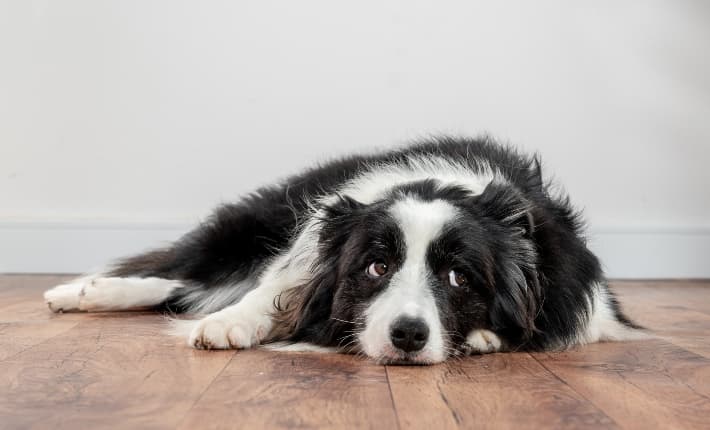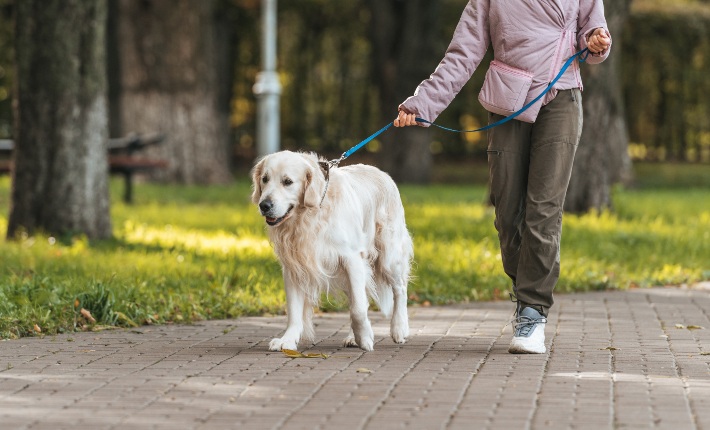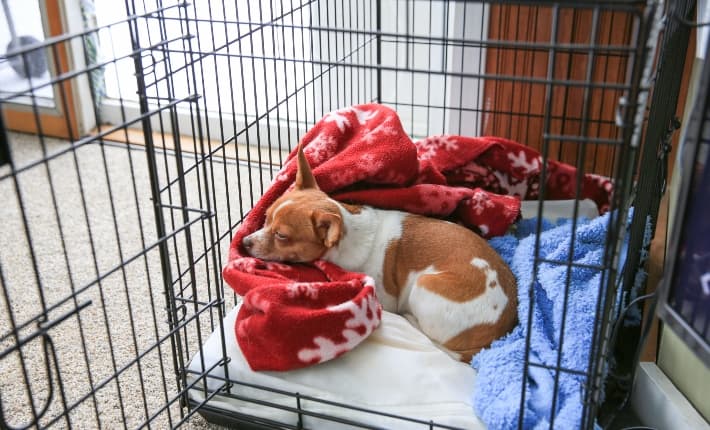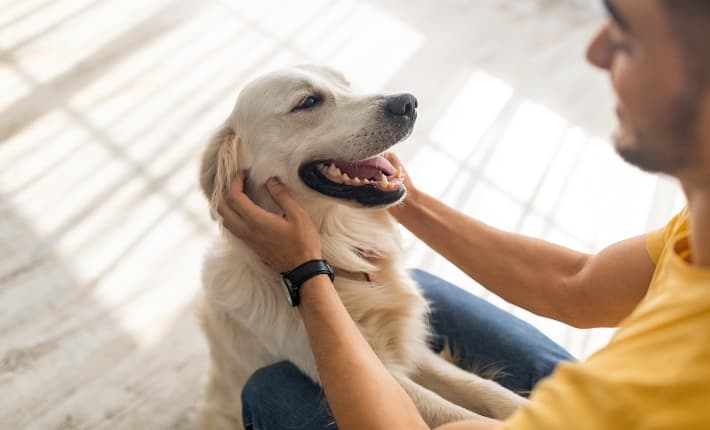Understanding Separation Anxiety in Dogs: Causes, Signs, & Ways to Help
In This Article:
You're preparing to leave your house. You head for the door and pick up your keys along the way. The moment your keys give a little jingle, your dog is at your side, barking incessantly. It almost seems like he knows you're leaving and he's trying to block your path to the door.
Separation anxiety is a common dog behavior issue, affecting 76% of American dogs according to Certapet. Even well-behaved pups can act out when experiencing this unpleasant feeling. But don’t worry! Once you understand the reasons behind the barking, destructive chewing, and other unwanted behaviors, you can help your furry friend feel secure even when you’re not around.
5 Signs of Separation Anxiety in Dogs

Every furry friend is different, and while excessive barking and crying are the classic signs of separation anxiety in dogs, it can manifest in other ways. Keep an eye out for these signs:
#1: Destructive behavior: Chewing furniture, scratching doors, and digging are all ways dogs cope with stress.
#3: Accidents in the house: Even a housetrained dog might have a potty accident when anxiety strikes.
#4: Restlessness: Pacing, excessive licking, panting, and shaking when left home alone may indicate your dog is feeling uneasy.
#5: Attempts to escape: Dogs may try to exit through the same door as their pet parents after they leave.
While these issues may suggest dog separation anxiety, it's important to consult your veterinarian to rule out any underlying medical conditions.
What Causes Dog Separation Anxiety?

There is no one answer to what causes separation anxiety. Some dogs could be more susceptible, while others never develop it at all. If you notice signs of separation anxiety in your dog, the following factors could be at play.
Feeling Abandoned by the Pack
Instinctually, dogs are pack animals. They may see your departure as a rejection, triggering panic, anxiety, and negative behaviors. This is more common in rescue dogs who have experienced loneliness and isolation before.
Change in Routine
Have you recently moved to a new house? Or maybe your new work schedule requires more in-office days. Unexpected shifts in environment and routine can leave your dog feeling confused.
Missed Out on "Me Time"
If your furry friend is experiencing separation anxiety, it may be because they aren’t used to being alone. Just like human babies, puppies need to learn new things gradually. Ideally, well-adjusted dogs should learn to tolerate alone time from a young age.
How to Help a Dog with Separation Anxiety
The good news is separation anxiety in dogs is manageable! With patience and a strategic approach, you can help your furry friend overcome the uncomfortable feeling of spending time alone. Try these solutions to help your dog with separation anxiety!
Desensitize Gently
No matter your dog’s age or past experiences, it is important for them to feel comfortable being alone. Desensitizing your furry friend to triggering stimuli, such as the sound of the front door opening, is a great way to start the process.
Try engaging in your usual departure routine without leaving: tie your shoes, jiggle your keys, and so on. This may help your furry friend stop associating these activities and sounds with distress.
Another tactic is to gradually accustom your dog to being alone. Start with short absences and work your way up—you can even practice short separations by just going into another room! Always reward them for quiet, calm behavior upon your return.
Get Moving

A tired pup is a calm pup (and too sleepy to bark the day away)! Enjoying some dog exercise at home or outside can promote the release of positive hormones, helping your furry friend stay relaxed and happy. Try taking them for a walk or engaging in a fun game of tug-of-war before you head out.
Don't Make a Fuss!
Avoid dramatic goodbyes or excessive attention when leaving or arriving home. This can heighten your dog’s emotional state, leading them to think something significant is happening and, ultimately, prompting anxiety about your departure. Keep your farewells calm, positive, and quick.
Chew It Out
Toys, puzzles, and chew treats are great ways to provide mental and physical stimulation! Letting your dog chew or play with an engaging toy before you head out can help release excess energy and may prevent them from chewing on furniture while you are gone.
🐶 Related: How to Calm an Anxious Dog: 5 Soothing Methods
Make Crate Time a Good Time

Crate training can be a valuable tool for avoiding separation anxiety. Think of a crate like a den or a familiar haven while your furry friend awaits your return. It’s a place they associate with positive experiences, maybe outfitted with cozy blankets. Crates can also aid with house training; dogs are less likely to soil their own sleeping area.
Keep in mind, every dog is different. Crate training may not be the best option and could make dog separation anxiety worse. If your furry friend seems overly stressed or anxious in a crate, consider alternatives such as gating off a dog-proof room or using a playpen. Always consult your veterinarian with any concerns or questions about crate training.
Conquering Separation Anxiety

With patience, understanding, and the right approach, it’s possible to overcome separation anxiety in dogs. Start small, stay consistent, and always reward good behavior! By understanding the causes and ways to help, our furry friends can conquer separation anxiety and enjoy a happier, more relaxed life!
Dogs can get very vocal when they’re feeling stressed, bored, or sick! Discover why dogs whine and how you can help manage this behavior.
FOLLOW US!






